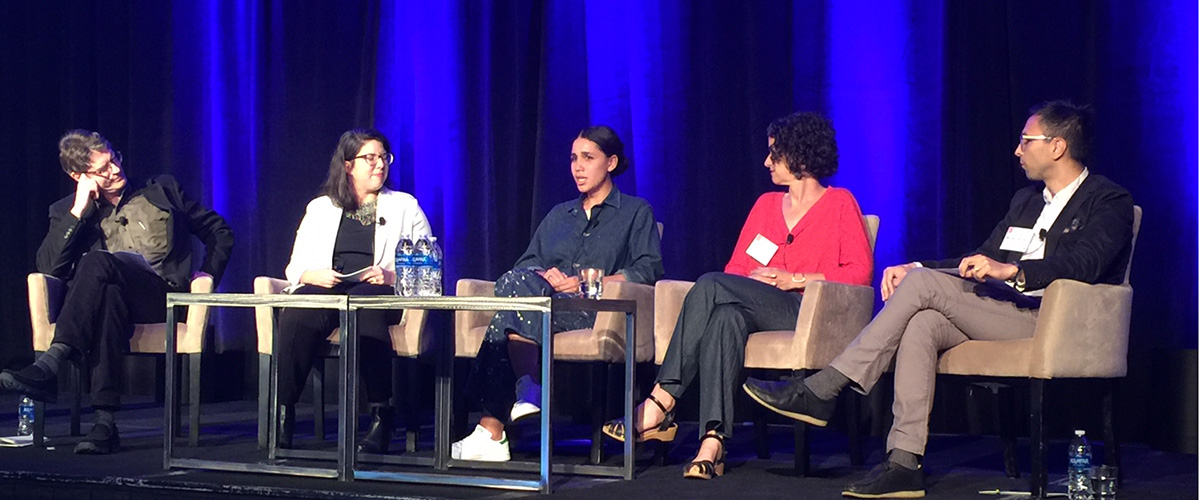Courts COVID Policing May 31, 2017
If you could go to a courthouse right now, the sound you would hear is not just the same eerie silence echoing elsewhere in society, from empty stores to unused playgrounds. It is the sound of the gears of justice grinding to a halt as jurisdictions scramble to avoid the worst of the COVID-19 pandemic. Emergency measures that keep people out of courthouses, however, raise questions of what process is “due” in times of crisis and how the criminal justice process will be altered if and when normalcy returns.
With its people-centered practices and typically close quarters, the justice system is especially vulnerable to the coronavirus, and courts across the country have postponed proceedings and restricted public access to facilities in response. Jury trials have been deferred, initial appearances delayed and correctional facilities placed on lockdown.
Individual modifications to regular business may seem minor or innocuous, but even relatively short procedural freezes raise immediate due process concerns. Elongating the period between an arrest and a first appearance extends the time for which individuals sit in jail cells without judicial oversight or the chance to challenge either the allegations or the detention. At the other end of the process, the cancellation of jury trials may be a logical means of social distancing, but it similarly reduces a critical constitutional right into a paper tiger.
Defendants are not the only ones caught in this disturbing state of limbo. Prosecutors are also paralyzed by the inability to try defendants or otherwise pull many of the levers of justice. Likewise, victims and witnesses must wait even longer to gain closure and end their involvement with the justice system.
Since delaying normal operations creates issues this troubling, solutions must work to reduce the stressors that create delays wherever possible. In practical terms, this means using each decisional chokepoint—from arrest and charging decisions to pretrial release and sentencing—to shrink the system. This will keep many low-risk individuals out of the system entirely and free up scarce court capacity for those who are left.
Thankfully, local leaders are already taking these kinds of steps. Police departments everywhere should consider following the lead of the Portland Police Bureau, which in agreement with the Multnomah County District Attorney’s Office started issuing citations for misdemeanors more frequently rather than taking people to jail. Likewise, prosecutors could take a cue from the San Francisco District Attorney’s Office, which is working with the Public Defender’s Office to identify detained individuals who can be safely released.
In addition to serving as short-term Band-Aids, these strategies will ultimately help the justice system recover from the COVID-19 pandemic. Few jurisdictions can afford case backlogs accruing to already packed dockets or additional detainees in crowded jails. As such, these ad hoc measures represent the best chance many jurisdictions will have to avoid the impossibly high caseloads that deferring cases for any meaningful period of time will create.
Beyond weathering the potential surge of cases once the justice system lifts its finger off the pause button, such policies will help dictate the future course of criminal justice reform as the public and policymakers judge the results in the coming months. Places that see crime rates drop or remain static will have momentum on their side should they wish to make these temporary measures permanent. On the other hand, those in which crime of any sort rises can expect tough-on-crime voices to argue for a return to the incarceration-heavy policies of yesteryear.
But the criminal justice community must force policymakers and the public to look deeper than this simple equation, in which less crime means a strategy is retained and more crime results in it being discarded. Crime rates are a particularly rough way to measure results under normal conditions. And after a global pandemic that shatters routines and shakes up society at large, results will be even more difficult to interpret.
Sifting through the data and educating stakeholders on its meaning will be an arduous task. But it’s the only way to save worthwhile programs that were unable to withstand the substantial headwinds of the pandemic. It is also the best way to transform more successful impromptu reforms into long-lasting change and ensure they reach their fullest potential.
Obviously, the immediate concern right now is saving lives and preserving public safety. But jurisdictions should not allow these imperatives to obscure other essential elements of our justice system. As local leaders have demonstrated throughout the country, justice and public safety need not be mutually exclusive. The right innovations can help mitigate the pandemic’s destruction while setting up the justice system to operate more fairly and effectively for years to come.
—Lars Trautman is a senior fellow of Criminal Justice and Civil Liberties at the R Street Institute and a former assistant district attorney


